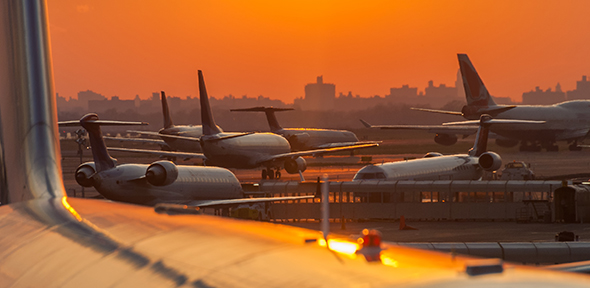 One of the missing pieces in the HM215-N update was a provision to allow for the carriage by air of UN 3528 and UN 3529. (Flammable liquid and flammable gas powered engines). With the publication of the latest edition of the ICAO Technical Instructions for the Safe Transport of Dangerous Goods by Air, the classification allocated to these numbers was changed from “9”, miscellaneous hazard, to “3”, flammable liquid and “2.1”, flammable gas respectively. A simple change reflecting the inherent hazard of the articles but one which created a problem with the way in which a variation file by the United States was written. Using IATA DGR referencing, USG-13 is a provision which, in part (sub-paragraph “d”), provides an exemption for specific kinds of dangerous goods when transported for replacement parts for aircraft. By changing the classification, aircraft engines were no longer under this exemption. Technically, the airlines could then get a replacement engine to a stranded aircraft without violating 49CFR.
One of the missing pieces in the HM215-N update was a provision to allow for the carriage by air of UN 3528 and UN 3529. (Flammable liquid and flammable gas powered engines). With the publication of the latest edition of the ICAO Technical Instructions for the Safe Transport of Dangerous Goods by Air, the classification allocated to these numbers was changed from “9”, miscellaneous hazard, to “3”, flammable liquid and “2.1”, flammable gas respectively. A simple change reflecting the inherent hazard of the articles but one which created a problem with the way in which a variation file by the United States was written. Using IATA DGR referencing, USG-13 is a provision which, in part (sub-paragraph “d”), provides an exemption for specific kinds of dangerous goods when transported for replacement parts for aircraft. By changing the classification, aircraft engines were no longer under this exemption. Technically, the airlines could then get a replacement engine to a stranded aircraft without violating 49CFR.
As part of the interim measures that allowed the use of 2017 regulations while Industry waited for HM215-N to be published, engines could still be shipped, however, for a short while, there was disharmony between the US and Rest of the World. For multi-national enterprises such as airlines, such disharmony is hugely expensive and potentially could place them in legal jeopardy in complying with two conflicting sets of legislation.
Fortunately, the US has recently updated its USG-13(d) to include both UN3528 and UN3529 and the problem is now resolved. Harmony is restored. Now, if only it were that simple with PED’s…
Note, ICAO’s latest list of variations also includes some contact details amendments for Belgium, Germany, Italy (ammunition) and Saudi Arabia (ammunition etc).
Belgium has in addition deleted BEG-5.
The full list of the latest revisions to State variations can be referenced here



